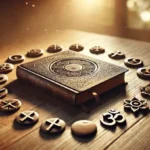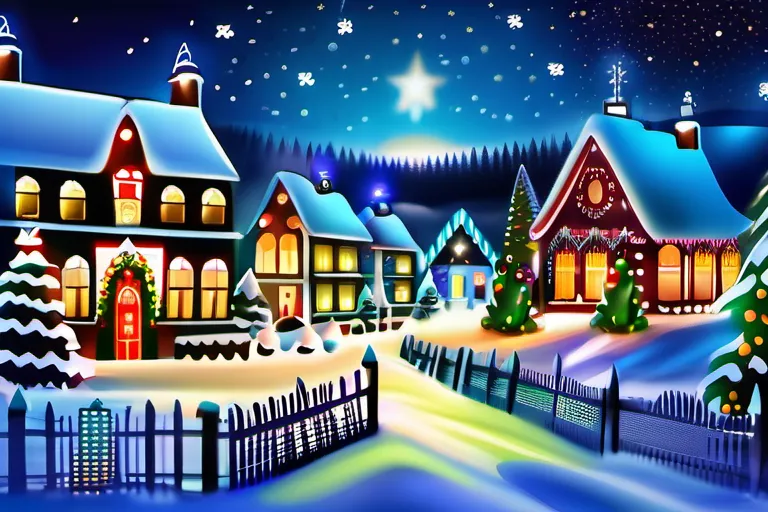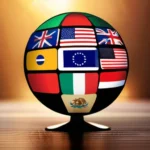Explore the history, traditions, symbols, and cultural significance of Christmas around the world.
From its religious origins to modern-day celebrations, Christmas is a fascinating holiday filled with rich history, traditions, and cultural significance. In this comprehensive guide, we’ll explore the roots of this beloved event, delve into various customs and symbols, and shed light on how it’s celebrated globally.
The Origins of Christmas
The origins of Christmas are like a long, winding river, tracing its path back through time to ancient civilizations and religious traditions. Let’s dive into this journey together, asking ourselves: Where did the idea of celebrating on December 25th come from?
One fascinating theory is that early Christians chose the date of the winter solstice as a way to Christianize pagan festivals. The winter solstice, the shortest day and longest night of the year, was celebrated by many cultures with feasts and rituals to welcome back the light. This event marked a turning point, but it wasn’t until later that December 25th became officially recognized as Christmas Day.
But why this particular date? Some argue it was chosen because it was already a significant time in Roman calendars due to the festival of Sol Invictus, the Unconquered Sun. Others suggest it aligns with the nativity stories found in the Bible, though the exact dates of Jesus’ birth remain uncertain.
The blending of religious and cultural practices can be seen throughout history. Just as the Christmas tree evolved from ancient Germanic traditions of decorating evergreens to symbolize eternal life, so too did many customs get incorporated into the celebration over time. Each culture has its unique way of marking this special day, yet all share a common thread of joy and unity.
So, as we explore further in our guide, let’s remember that Christmas is not just about one story or tradition; it’s a tapestry woven from countless threads, each telling a piece of the larger narrative. Join us on this exploration to discover how people around the world celebrate this beloved holiday, and maybe you’ll find new ways to bring its spirit into your own home.
Christmas Around the World
Imagine stepping into a magical portal that transports you to the bustling streets of Istanbul during Christmas Eve. The air is thick with the aroma of Turkish delight and freshly baked cookies, while colorful lights twinkle like stars in the night sky. How does it feel? A blend of tradition and surprise, isn’t it? This is just one of many fascinating ways people celebrate Christmas around the world.
From the snowy streets of Prague to the warm beaches of Brazil, each culture adds its unique twist to this beloved holiday. In Praha, locals fill the squares with luminous lanterns and carol singers, creating an enchanting atmosphere that feels like stepping into a fairy tale. Do you wonder how they manage such festive spirits in winter? It’s all about preserving old traditions and bringing them alive.
In contrast, families in Brazil embrace the summer solstice with beach parties and bonfires. They decorate their homes with flowers and palm leaves instead of evergreen trees, turning the holiday into a celebration of life and nature. How do they manage to find joy during what is traditionally a cold season? It’s about finding beauty in the present moment and sharing it with loved ones.
Travel further west to Estonia, where Christmas Eve is marked by a feast and the lighting of candles at sunset. The traditional dish, blood soup, is both an acquired taste and a cultural cornerstone. Can you imagine trying something so unique? It’s more than just food; it’s a symbol of unity and family bonding.
Across the Atlantic, Australia takes a different approach, with Christmas Day falling during their summer. The beaches become bustling with activities, and barbecues reign supreme. How do they make the most out of such a warm climate? By making it a festival of outdoor fun and relaxation, perhaps turning lemons into lemonade by changing the script.
Each culture’s celebration of Christmas is like a beautifully crafted mosaic, combining old traditions with new ideas to create something uniquely theirs. These celebrations aren’t just about exchanging gifts or eating special foods; they are about coming together, sharing joy, and making memories that last a lifetime. As you explore the rich tapestry of global Christmas traditions, don’t you find yourself wondering how your own celebration could be enriched by these diverse customs?
Symbols of Christmas
Have you ever stopped to ponder why certain symbols are such an integral part of Christmas? Why do we deck our halls with bright red candy canes, adorn our homes with evergreen trees, and hang up strings of glistening mistletoe? Let’s take a journey through the rich tapestry of these symbols, exploring their origins and the stories they tell.
The Christmas Tree: Imagine a living, breathing storybook come to life in your living room. The tradition of the Christmas tree dates back centuries, with its roots in ancient Rome and Germany. But it wasn’t until the 16th century that Martin Luther is said to have adorned a tree with candles to reflect the stars above. Today, this symbol stands as a beacon of joy and hope, with every twinkling light representing the countless blessings in our lives.
- Evergreen branches symbolize eternal life and the resilience of nature through winter’s harshness.
- Fruits, nuts, and candy represent abundance and generosity.
- Ornaments, especially handcrafted ones, remind us of personal stories and cherished memories.
Each decoration adds a layer to the tree’s narrative, making it more than just a decorative element. It’s like peeling back the layers of an onion, revealing deeper meanings with each reveal. How many times have you found yourself lost in thought as you decorate your own Christmas tree?
Mistletoe: Another charming symbol that adds a touch of mystery and enchantment to our celebrations. In ancient Norse mythology, mistletoe was considered a sacred plant that could heal and ward off evil spirits. In modern times, it has become a romantic tradition, where couples can steal a kiss under its protective leaves. But have you ever wondered why this particular plant holds such mystical power?
The word mistletoe comes from the Old English ‘mistel’ meaning ‘dung,’ and ‘tan’ meaning ‘twig,’ suggesting that it grows where bird droppings fall, often on oaks. This association with fertility and new life adds an extra layer of symbolism to this green plant. So, next time you find yourself under mistletoe, consider the ancient lore behind the kiss.
Candy Canes: These sweet symbols are not just about sugar and joy. Each curve and twist carries a message of comfort and guidance. Legend has it that candy canes were first created in 1670 by a German choirmaster who wanted to keep children quiet during long nativity services. He bent hard candies into crooks, symbolizing the shepherd’s crook or the shepherd’s staff, which pointed towards Bethlehem.
Today, these festive sticks of sugar continue to bring smiles and delight, with their red stripes representing the blood of Christ and white signifying purity. Whether you’re breaking one in half as a treat or leaving it on your tree, consider the sweet journey these symbols have taken through history.
As we explore these beloved symbols, we uncover layers of tradition and meaning that connect us to our past and enrich our present. So next time you see a Christmas tree aglow, a mistletoe hanging low, or a candy cane in your hand, take a moment to appreciate the stories they carry. They are more than just decorations; they are part of the rich fabric that makes Christmas so special.
The Role of Santa Claus
Have you ever wondered how a humble bishop from the 4th century transformed into the jolly, red-suited Santa Claus we know today? The journey of Saint Nicholas is a tale woven through history, culture, and the magic of Christmas itself.
Imagine a time when Nicholas, known for his kindness and generosity, became a symbol of hope and goodwill. His legend spread across the ages, carried by tales of miracles and acts of charity. As these stories traveled, so did Nicholas’ influence, eventually reaching the shores of Europe and beyond.
The transformation from Saint Nicholas to Santa Claus wasn’t just about appearance; it was also a journey through symbolism and tradition. The idea of a magical figure bringing joy and gifts began to take root in popular culture, much like how seeds are scattered by the wind, growing into new life wherever they land.
Red suits and reindeer sleighs became the hallmark of Santa Claus, but why these specific elements? The red suit, with its associations with warmth, generosity, and fire, likely came to represent the hearth and home—central to Christmas celebrations. And then there are the reindeer, symbols of speed and magic, pulling the sleigh through the night skies, a metaphor for the swift passage of time and the journey from one year to the next.
The image of Santa Claus as we know him today is a blend of history, folklore, and cultural adaptation. From the Netherlands’ Sinterklaas to America’s commercialized version, each country has added its own flavor, creating a tapestry rich with diversity yet united by shared joy.
So, next time you see Santa in his red suit or hear the jingle of reindeer bells, take a moment to appreciate the centuries-old story behind this beloved figure. It’s more than just a festive costume; it’s a bridge connecting generations and cultures through the universal language of Christmas magic.
Christmas Music and Carols
When we think about Christmas, one of the first things that come to mind are the tunes that fill our ears from early November until the new year. But have you ever wondered about the history behind these melodies? How did they evolve into what we hear today?
Are carols more than just songs we hum during festive times? They certainly are! Carols have a rich and storied past, often carrying messages of hope and joy that resonate with people across generations. From the traditional ‘Silent Night’ to newer favorites like ‘All I Want for Christmas Is You,’ each song tells its own story.
The origins of carols can be traced back centuries, when they were often sung in churches during religious services. Over time, these songs began to evolve into the secular tunes we know today, with themes that celebrate family and love. Imagine a long, winding path leading from ancient cathedrals to contemporary holiday parties—this is where Christmas music has traveled.
Modern hits like ‘Jingle Bell Rock’ by Bobby Helms or more recent tracks by Justin Bieber blend the old with the new, creating a festive atmosphere that captures both traditions and modern sensibilities. These songs aren’t just background music; they’re part of the fabric that weaves together our Christmas experiences.
How do you choose which carols to play during your holiday gatherings? Is it based on personal preference or is there a deeper significance? Whether you opt for classic hymns or contemporary hits, every choice reflects your unique interpretation of what Christmas means to you. So the next time you hear those familiar notes, take a moment to appreciate how far they’ve come and what they mean today.
Modern Christmas Trends and Debates
As we delve into the realm of Modern Christmas Trends and Debates, it’s like walking through a colorful tapestry, each thread representing a different issue or perspective. Have you ever pondered why Christmas, once a humble celebration centered around faith and family, has transformed into a global commercial extravaganza? The answer lies in the relentless march of time and progress.
One of the most pressing debates revolves around commercialization. Every year, we witness stores adorned with twinkling lights and festive decorations long before the snow falls. Is it the joyous spirit of giving or just another excuse for retailers to boost their profits? This question is like asking if a Christmas tree is merely green foliage or a symbol of home and warmth.
Another layer of complexity comes from the push for political correctness. As society evolves, so do our views on inclusivity. Should we be mindful of different cultural backgrounds when celebrating? Or should Christmas traditions remain a homogenous experience, perhaps alienating those who feel excluded? This is akin to asking if a cookie cutter can create the perfect gingerbread man or if each one should reflect its unique baker’s touch.
The role of religion in modern celebrations also poses significant questions. While many associate Christmas with nativity scenes and religious rituals, others see it as a secular holiday focused on goodwill and kindness. Can we maintain reverence for religious origins while embracing the broader, more inclusive nature of the season? It’s like trying to navigate through a labyrinth where every path leads back to different interpretations.
As we navigate these debates, it becomes clear that Christmas is not just about trees and presents; it’s about identity, culture, and community. Each year, this holiday transforms, reflecting the ever-changing landscape of our world. Are you ready to embrace the challenges and opportunities that come with modernizing an age-old tradition?
Conclusion
 As you embark on this journey through Christmas, you’ll gain a deeper appreciation for its enduring allure. Whether you celebrate it or simply admire its charm, this holiday has captured the hearts of people worldwide for centuries.
As you embark on this journey through Christmas, you’ll gain a deeper appreciation for its enduring allure. Whether you celebrate it or simply admire its charm, this holiday has captured the hearts of people worldwide for centuries.











